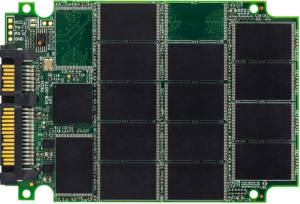Importance of Locking Firmware Revision of your Flash Card
 I was recently alerted to update my cell phone’s operating system as happens every few months or so. There was nothing wrong with my phone. It was working great and doing everything I wanted it to.
I was recently alerted to update my cell phone’s operating system as happens every few months or so. There was nothing wrong with my phone. It was working great and doing everything I wanted it to.
So I accepted the update and off it went. Shortly thereafter things started going wrong, previously working apps would freeze and the phone became less than reliable. Shortly thereafter an emergency new OS fix alert came up.
I guess I wasn’t the only one who had issues. I certainly imagine the cell phone manufacturer (big guy who shall remain nameless) thoroughly tested the faulty OS prior to release and didn’t expect it to have problems.
What about Firmware in a SSD
Now think about, what is a solid state drive? From a silicon perspective, it has one or more NAND flash memory components, a controller and a few discrete components. But the brains of the operation is the firmware which tells the controller what to do.
 You could have the most reliable SLC NAND flash and a solid controller architecture, but if it has buggy firmware code – there will be issues - data loss, locked up system and/or no longer being recognized by the host system no matter how many times it is power cycled.
You could have the most reliable SLC NAND flash and a solid controller architecture, but if it has buggy firmware code – there will be issues - data loss, locked up system and/or no longer being recognized by the host system no matter how many times it is power cycled.
For Industrial Embedded Flash Storage such as SLC Compact Flash and SLC SD Cards, a poorly functioning card can bring down the system controlling an aircraft, large industrial processing plant or fire warning system.
So why, after months of qualifying an OEM system for a mission critical application, do some engineers and procurement personnel allow the firmware revision of their flash cards to change without qualification during subsequent shipments?
I would hope this is because they’re unaware of the change. A typical occurrence is for the flash card manufacturer to “spin” the firmware whenever there’s an update. This may fix an esoteric issue that one customer was having, but it can and regularly does introduce other issues to previously solid code.
Word of warning, once thoroughly qualified for your OEM system, DON’T CHANGE THE FIRMWARE.
“Make sure you have a specific part number from the manufacturer which locks the controller silicon, NAND memory silicon and the firmware.”
Cactus is one of the few manufacturers who will lock the Bill Of Material (BOM) including all silicon and firmware. The Industrial Grade Flash Card an OEM qualifies is what they will receive in production for many years.
At Cactus Technologies, we’re focused on delivering highly reliable flash storage products to embedded OEM customers and providing service to exceed their expectations. For more info, please contact a Cactus Technologies’ Expert.






